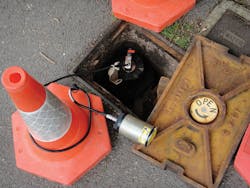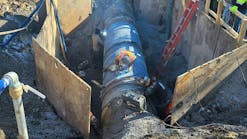Following successful trials, Anglian Water is undertaking installation of some 3,500 Enigma3hyQ leak detectors across its network by June 2019.
Precise Location
The location of each sensor can be displayed on Google Maps and these locations can be coded to show leak alarms. Historical data is also available and, together with the visualization of leak locations on Google Maps and Street View, assists leakage teams with management of leaks.
The following day, the sensors transfer the GPS location information and sound files to the PrimeWeb interface where the device operator can create a network diagram. The operator can also change the linear pipeline from a geographic information system (GIS) if the distances from the default Google Maps application are incorrect.
Confirmation of the probability that the noise correlation has been successful is provided to the operator in the form of a confidence factor.
Andy Smith, leakage optimization manager at Anglian Water, said, “One of the biggest challenges faced across the water industry is the ability to detect leaks effectively on plastic pipes as they don’t transmit noise when they leak. Critically, unlike more widely used methods, this new technology can be used on plastic pipes, which make up 60 percent of our water mains.
“This is a real game-changer in how we tackle leakage in terms of our teams on the ground and the processes we use. It will revolutionize what we do in terms of leakage,” Smith added.
“Working with our in-house data team we’ve also developed a dedicated modeling system which works out the optimum points across the water mains network to place the sensors,” he noted. “This precise deployment means the noise loggers can be installed much more efficiently.”





